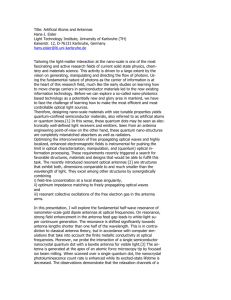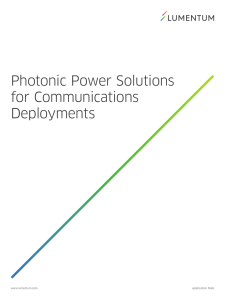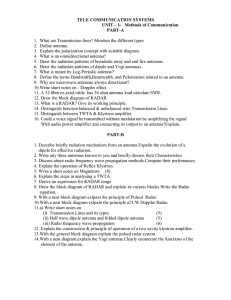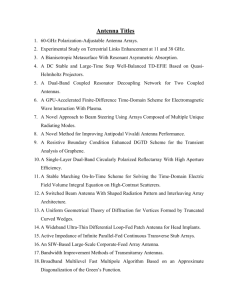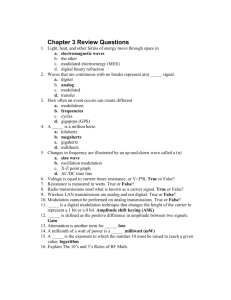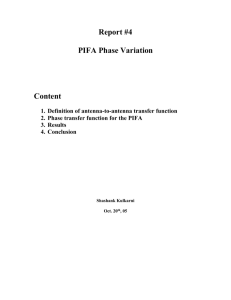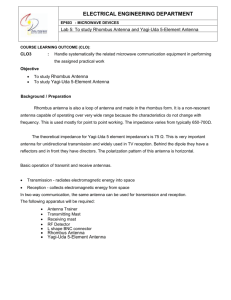Model Question Paper(Communication Engineering II EC4001)
advertisement
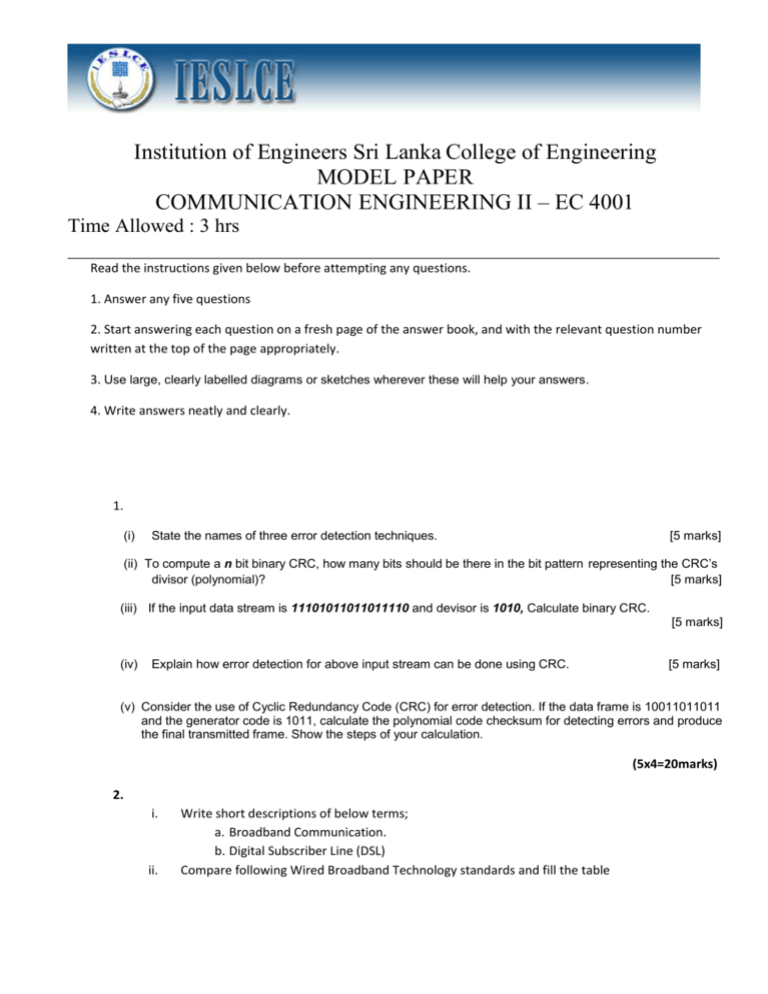
Institution of Engineers Sri Lanka College of Engineering MODEL PAPER COMMUNICATION ENGINEERING II – EC 4001 Time Allowed : 3 hrs _________________________________________________________________ Read the instructions given below before attempting any questions. 1. Answer any five questions 2. Start answering each question on a fresh page of the answer book, and with the relevant question number written at the top of the page appropriately. 3. Use large, clearly labelled diagrams or sketches wherever these will help your answers. 4. Write answers neatly and clearly. 1. (i) State the names of three error detection techniques. [5 marks] (ii) To compute a n bit binary CRC, how many bits should be there in the bit pattern representing the CRC’s divisor (polynomial)? [5 marks] (iii) If the input data stream is 11101011011011110 and devisor is 1010, Calculate binary CRC. [5 marks] (iv) Explain how error detection for above input stream can be done using CRC. [5 marks] (v) Consider the use of Cyclic Redundancy Code (CRC) for error detection. If the data frame is 10011011011 and the generator code is 1011, calculate the polynomial code checksum for detecting errors and produce the final transmitted frame. Show the steps of your calculation. (5x4=20marks) 2. i. ii. Write short descriptions of below terms; a. Broadband Communication. b. Digital Subscriber Line (DSL) Compare following Wired Broadband Technology standards and fill the table DSL Type Description Up/Down Symmetry Data Rate Downstream Data Rate Upstream Distance Limit Applications ADSL SDSL HDSL VDSL IDSL iii. iv. v. Draw the connectivity diagram of ADSL network showing different block from the Central Office to Customer Premises. Explain the function of each block. What are the competing technologies to ADSL, for broadband access? Explain the two modulation techniques used in xDSL with clear frequency spectrums for each technique. What are the advantages and disadvantages of ADSLs? What are the advantages and disadvantages of PONs? What is FTTx and explain its different configurations FTTC, FTTN, FTTB and FTTH. 3. (i) What is meant by Effective Isotropic Radiated Power (EIRP) (ii) Draw a clear diagram to illustrate the operation of a parabolic dish antenna and write short notes on below. a. Effective aperture of a parabolic dish antenna b. Offset antennas c. Free space path loss (iii) Draw a block diagram of a microwave radio (line-of-sight) repeater system and functions and explain Multiplexing and multiple access arrangements (iv) What are the different types of Orbits used for satellite communication, explain their characteristics. look angle calculations; antenna footprints; (v) What are the Typical subsystems in a satellite communication system? Draw a block diagram of a satellite transponder and explain how it functions (5x4=20marks) 4. i. What is meant by Radiation pattern of an antenna? Explain below terms: a. Half power beamwidth b. Difference between Antenna Gain & Directivity ii. What is an Antenna array? Why antenna arrays are popular? Write short notes on: a. Two-element array b. Linear arrays iii. What is meant by Pattern multiplication and Antenna matching? iv. Draw clear diagrams showing feeding mechanisms of below microwave antennas. a) Parabolic reflector b) Horn antennas c) Dielectric lens v. What is a Microstrip antenna? S 5. i. ii. iii. iv. v. Explain three modes of communication: Simplex, Half duplex, Full duplex Describe DECT System mentioning its specifications. Explain the evolution of Cellular Communication technology 1G, 2G, 2.5G, 3G, 3.5G and 4G mentioning the main achievement in each generation. Draw the GSM architecture and describe its subsystems. Write short notes on below: a. Hand over , b. Frequency reuse (5x4=20marks) 6. i. ii. iii. iv. v. What are the advantages and disadvantages of Optical Fiber in telecommunication applications? Draw a block diagram showing complete Optical Fiber communication system and the construction of a fiber optic transmission line. What are the types of optical fibers? Explain their characteristics with refractive index profile and clear diagrams of the structure. A step index optical fiber of 50µm core diameter and 125µm cladding diameter supports 320 propagation modes at 850nm wavelength. The refractive index of its core is 1.485. Calculate the refractive index of cladding and critical angle of this step index fiber. Write short notes on: a. Optical Sources b. Optical Fiber splicing. (5x4=20marks)

